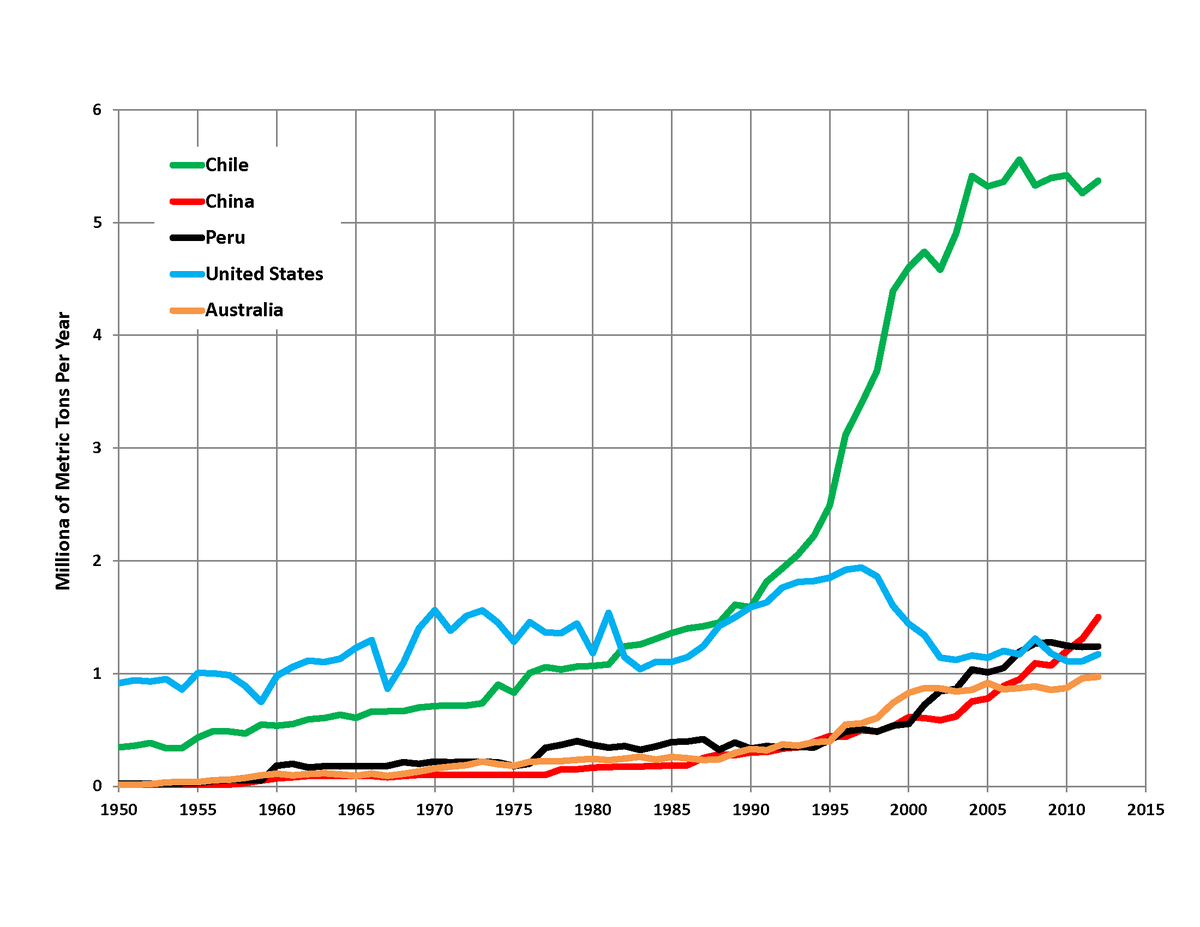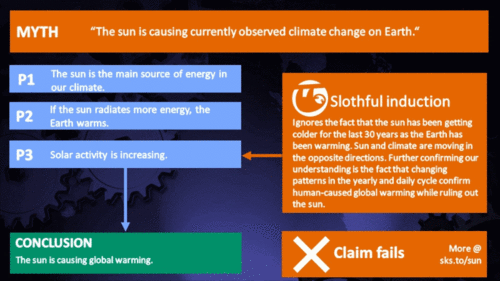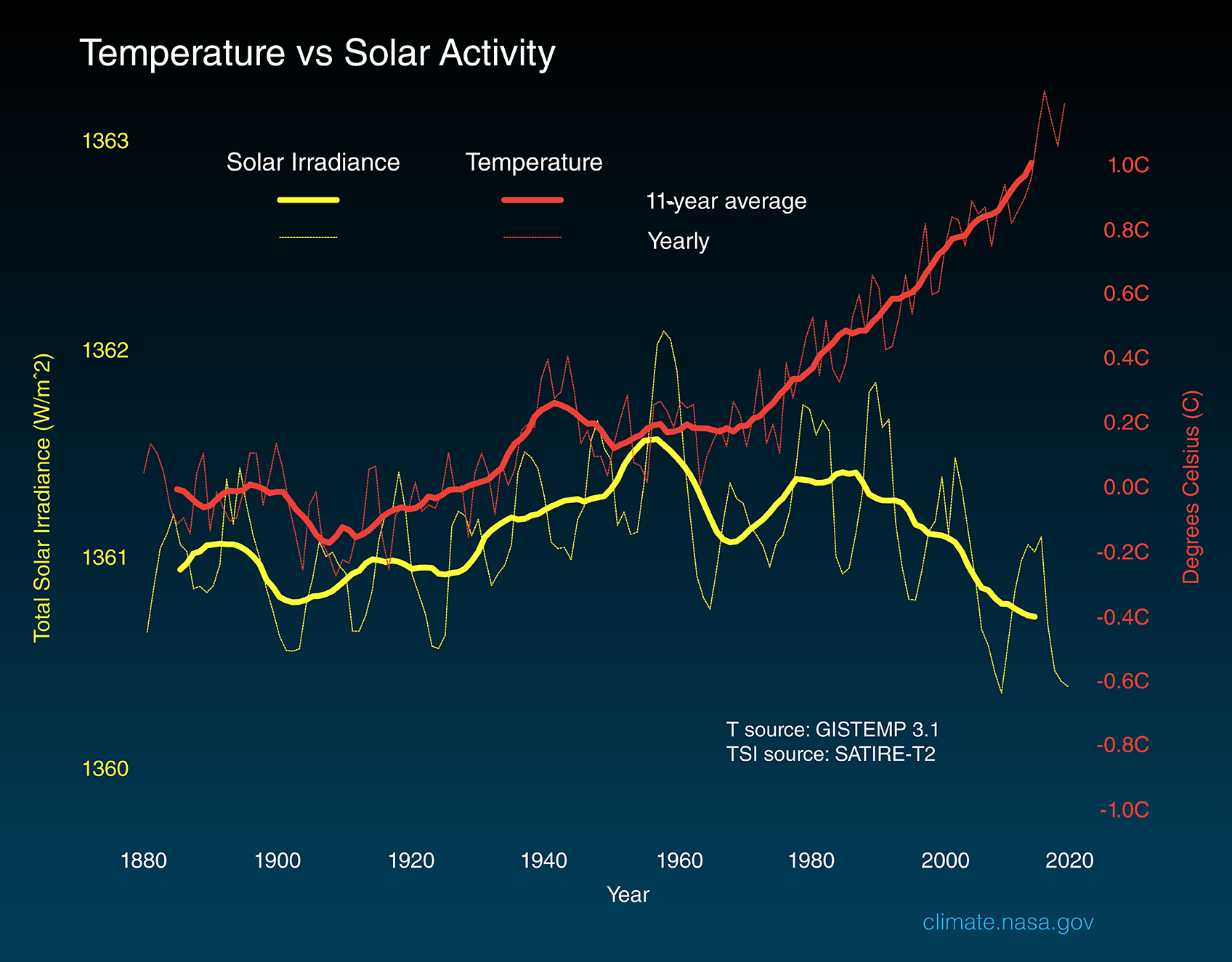Hmm................interesting, I wonder what the climate change deniers will say.
-
IMPORTANT // Please look after your loved ones, yourself and be kind to others. If you are feeling that the world is too hard to handle there is always help - I implore you not to hesitate in contacting one of these wonderful organisations Lifeline and Beyond Blue ... and I'm sure reaching out to our PRE community we will find a way to help. T.
Global Warming
- Thread starter Disco08
- Start date
You are using an out of date browser. It may not display this or other websites correctly.
You should upgrade or use an alternative browser.
You should upgrade or use an alternative browser.
So what brand of cars are they producing in Canberra ToOheys? Might have to consider test driving one to see if they're any good.Canberra to stop producing fossil fuel cars by 2035. Hopefully other states follow.

Think, for example, about the single biggest market for Big Oil: gas for cars. But now the government is going to be offering you $7,500 to help pay for an EV, and building out a nationwide network of fast chargers to take away your range anxiety. Meanwhile, you’ve been paying $5 for a gallon of gas, a memory that won’t soon fade. Oh, and as Hertz announced this week, the maintenance cost on their fleet of electric cars is 50% less than for internal combustion vehicles, because there aren’t many moving parts. Now, as more and more people move towards electric cars, not only does your gas business begin to slow, but your natural allies begin to find new friends: if GM and Ford are converting to electrics, suddenly they and their lobbyists more interested in making life easier for sun and wind companies. And so on, in an accelerating virtuous cycle. The fossil fuel industry had a world-changing product in 1822, and a relatively lousy one in 2022; that is going to erode their business no matter how many Senators they still own, and even if they can use those Senators to get federal support for bad ideas (CCS, say).
Then there's this cheery prognostication...

 johnmenadue.com
johnmenadue.com

There’s no escaping a hothouse earth - Pearls and Irritations
The climate apocalypse may prompt us to live life in a way it should have been in an ecologically and deeply connected world of inter-being.
So if you want 3 day delayed access to the Australian Financial review (text only) you can sign up for free at the Victorian State Library (as a Victorian resident)
I've found this out while I'm looking for a new career in energy transition space afte 2 and half decades in oil and gas.
This will give you access to this article from Sep 9 via proquest.
Paywalled at AFR website - https://www.afr.com/policy/energy-a...t-free-environmental-saviours-20220905-p5bfk6
But summary is electric vehicles need a lot of copper and mines in Congo paying child labor $2-$3/day is making the copper - and I assume destroying the local environment there too.
... the alternate is obviously way more expensive electric vehicles and a delay in CO2 reductions due to transport. Will we destroy the world trying to save the world?
I heard an interesting podcast with a philosopher talking about how future lives are as important as current lives (pretty much climate change in a nutshell) and how capitalism just doesn't work. He was thinking in 1000 - 10000 year type time scales. Growth of 5%/year for 1000 years is 1,546,318,920,731,927,238,984. Clearly nothing can do that. I found it quite profound as with an engineering background numbers like this just resonate with me.
It is interesting because we think in a lifetime scale of around 50 years where 5% growth is a factor of 11 which does work. Clearly capitalism drives a lot of positive outcomes. But infinite growth just isn't going to work for future generations and it will be interesting when as a society we work out how to harness the best of capitalism to drive improvement and endeavour and also the acknowledgement the earth has limited resources.
I've found this out while I'm looking for a new career in energy transition space afte 2 and half decades in oil and gas.
This will give you access to this article from Sep 9 via proquest.
Shibboleth Authentication Request
login.ezproxy.slv.vic.gov.au
Paywalled at AFR website - https://www.afr.com/policy/energy-a...t-free-environmental-saviours-20220905-p5bfk6
But summary is electric vehicles need a lot of copper and mines in Congo paying child labor $2-$3/day is making the copper - and I assume destroying the local environment there too.
... the alternate is obviously way more expensive electric vehicles and a delay in CO2 reductions due to transport. Will we destroy the world trying to save the world?
I heard an interesting podcast with a philosopher talking about how future lives are as important as current lives (pretty much climate change in a nutshell) and how capitalism just doesn't work. He was thinking in 1000 - 10000 year type time scales. Growth of 5%/year for 1000 years is 1,546,318,920,731,927,238,984. Clearly nothing can do that. I found it quite profound as with an engineering background numbers like this just resonate with me.
It is interesting because we think in a lifetime scale of around 50 years where 5% growth is a factor of 11 which does work. Clearly capitalism drives a lot of positive outcomes. But infinite growth just isn't going to work for future generations and it will be interesting when as a society we work out how to harness the best of capitalism to drive improvement and endeavour and also the acknowledgement the earth has limited resources.
Watch
Original shows and popular videos in different categories from producers and creators you love
 fb.watch
fb.watch
Electric cars are made by mining a massive amount of resources. The machinery is not wind powered. It's all a scam.
If you go outside you don't say to yourself "oh co2 must be high today, it's really hot". You say that the sun is really hot and there is no clouds. Think about this for a while.
The DR Congo mines about 3% of the world's copper, with the US mining about as much, and Australia not far behind. Not sure how the writer can say the "child labor" mined copped is what EVs are using.So if you want 3 day delayed access to the Australian Financial review (text only) you can sign up for free at the Victorian State Library (as a Victorian resident)
I've found this out while I'm looking for a new career in energy transition space afte 2 and half decades in oil and gas.
This will give you access to this article from Sep 9 via proquest.
Shibboleth Authentication Request
login.ezproxy.slv.vic.gov.au
Paywalled at AFR website - https://www.afr.com/policy/energy-a...t-free-environmental-saviours-20220905-p5bfk6
But summary is electric vehicles need a lot of copper and mines in Congo paying child labor $2-$3/day is making the copper - and I assume destroying the local environment there too.
... the alternate is obviously way more expensive electric vehicles and a delay in CO2 reductions due to transport. Will we destroy the world trying to save the world?
I heard an interesting podcast with a philosopher talking about how future lives are as important as current lives (pretty much climate change in a nutshell) and how capitalism just doesn't work. He was thinking in 1000 - 10000 year type time scales. Growth of 5%/year for 1000 years is 1,546,318,920,731,927,238,984. Clearly nothing can do that. I found it quite profound as with an engineering background numbers like this just resonate with me.
It is interesting because we think in a lifetime scale of around 50 years where 5% growth is a factor of 11 which does work. Clearly capitalism drives a lot of positive outcomes. But infinite growth just isn't going to work for future generations and it will be interesting when as a society we work out how to harness the best of capitalism to drive improvement and endeavour and also the acknowledgement the earth has limited resources.
If you go outside you don't say to yourself "oh co2 must be high today, it's really hot". You say that the sun is really hot and there is no clouds. Think about this for a while.
I thought about it for a while and concluded "Holy smoke that is stupid as all hell"
I certainly didn’t fact check it and am no expertThe DR Congo mines about 3% of the world's copper, with the US mining about as much, and Australia not far behind. Not sure how the writer can say the "child labor" mined copped is what EVs are using.
On copper mines.
So looks like it is mainly concentrated in a few countries.

List of countries by copper production - Wikipedia
And also that there is a lot still in the ground.
Long Term Availability of Copper
Long Term Availability of CopperCopper Reserves and ResourcesTypically, the future availability of minerals is based on the concept of reserves and resources. Reserves are deposits that have been discovered, evaluated and assessed to be economically profitable to mine. Resources are far bigger...
icsg.org
So I found this paper that projects how much of known reserves needed for 100% renewables.
Cobalt lithium and nickel seem the problem children.
My point is more that making the switch is going to lead to a new set of constrained resources and incentivise places to abuse the environment and people to maximise profit. Pg 8 has this and seems cobalt is where the Congo is being exploited.
Seems like copper won’t be the problem child although the large concentration of supply in a few countries makes some kind of country level cartel behaviour Like OPEC - say the CMC a threat.
I thought about it for a while and concluded "Holy smoke that is stupid as all hell"
So you do say that co2 is much higher on hot day? And I'm the stupid one....I thought about it for a while and concluded "Holy smoke that is stupid as all hell"
We need to work out better ways of storing electricity. Current battery technology is not very efficient and the weight of batteries is a real concern Add to that the rare earths that many batteries contain and it is a real issue. For a car you really need to either store electricity more efficiently or look to some other options such as hydrogen. I know there is a lot of research going on and things will improve.
For the electricity grid I reckon the issues are less. During the day clearly there is way more solar in this country than we need. At night, wind power has huge potential. Many years ago a study found that wind power in the UK could provide all of their electricity needs all the time. Think about that, the UK with maybe triple our population, way less land and way less coastline. We can easily provide enough energy just with offshore wind. Then there is the untapped potential of tidal power, you can run concentrated solar thermal electricity generation overnight, there's geological thermal energy and I'm probably missing a pile of options here. Add in storage as pumped hydro and we can do this.
DS
For the electricity grid I reckon the issues are less. During the day clearly there is way more solar in this country than we need. At night, wind power has huge potential. Many years ago a study found that wind power in the UK could provide all of their electricity needs all the time. Think about that, the UK with maybe triple our population, way less land and way less coastline. We can easily provide enough energy just with offshore wind. Then there is the untapped potential of tidal power, you can run concentrated solar thermal electricity generation overnight, there's geological thermal energy and I'm probably missing a pile of options here. Add in storage as pumped hydro and we can do this.
DS
So you do say that co2 is much higher on hot day? And I'm the stupid one....
no
I thought about it for a while and concluded "Holy smoke that is stupid as all hell"
I went outside on a cloudy day and couldnt see the sun, but it was still warm and light. I went back inside and hid under a blanket, confused.
all fair, i just reckon some sections (meaning the writer- not you) are pretty quick to jump on any potential issues in the fight against climate change, while very happy to ignore the same issues with the status quo.I certainly didn’t fact check it and am no expert
On copper mines.
So looks like it is mainly concentrated in a few countries.

List of countries by copper production - Wikipedia
en.m.wikipedia.org
And also that there is a lot still in the ground.
Long Term Availability of Copper
Long Term Availability of CopperCopper Reserves and ResourcesTypically, the future availability of minerals is based on the concept of reserves and resources. Reserves are deposits that have been discovered, evaluated and assessed to be economically profitable to mine. Resources are far bigger...icsg.org
So I found this paper that projects how much of known reserves needed for 100% renewables.
Cobalt lithium and nickel seem the problem children.
My point is more that making the switch is going to lead to a new set of constrained resources and incentivise places to abuse the environment and people to maximise profit. Pg 8 has this and seems cobalt is where the Congo is being exploited.
Seems like copper won’t be the problem child although the large concentration of supply in a few countries makes some kind of country level cartel behaviour Like OPEC - say the CMC a threat.
Angry Ant, that comment isn't so easy to laugh at, and far harder to just explain away.I thought about it for a while and concluded "Holy smoke that is stupid as all hell"
The sun is the sole source of energy on earth other than the miniscule amount of energy that is derived from heat inside the core of the earth. How it gets pushed aside as a key driver of climate is really something i find personally staggering.
Here is something to consider when you look up at the sun.
It contributes 1,367 watts per square metre continuously on the upper atmosphere. That figure is taken from satellite measurements.
CO2 on the other hand has contributed 2 watts per sq metre in total, not continuously, but in the history of the earth.
We know that solar output has increased over the 20th century, but for whatever reason, there is disagreement as to how much, if any effect there is on the earth's climate. These disagreements mainly stem from the fact that the data is coming from proxy records.
To solve this, they turned their attention to satellite records. We had precise measurements from TSI records from 1978 from satellites carrying the ACRIM system, so it was possible to try to establish some sort of correlation or otherwise. The problem is that there is a gap in the records caused by the halt in the space program from the space shuttle disaster. These satellites need to be periodically replaced, with an overlap of date and cross calibration, if that makes any sense. By the time the new ACRIM system was launched, the old one had been offline from 1989 to 1991.
The only way to fill this data gap was to use a different monitor called ERB, which wasn't really designed for this purpose. Regardless of this, at least it was something they could work with. Richard Wilson of Columbia University used this data along with other sources to reconstruct the missing period. The thing about ERB was that, like ACRIM it was also launched in 1978 so it was possible to align the two data sets from both systems and work into the gap period.
The complete data from 1980 along with the reconstructed data filling the gap showed an increase in solar output through the 80's and tailing off at the end of the decade, which corresponds perfectly with the increase in earth temperature.
The alarmists didn't like this result at all, so a different team led by Claus Frolich and Judith Lean produced a new reconstruction from the same data, which hey presto, showed a steady decline from 1980. Interestingly, when interviewed in later years, these same authors mentioned their motivation to disprove the earlier re-modeling as they were concerned it would be used by 'sceptics' to disprove the whole CO2 theory. (so much for just letting the data lead the theory instead of vice versa).
So the pertinent question is, how did the second group led by Claus Frolich and Judith Lean come up with such a different result. Well according to them, one of the sensors on the ERB system had become faulty and had become more sensitive and was giving incorrect readings. So they obviously made corrections to this data to cancel out the incorrect data coming from ERB.
But was their a fault from the sensor?
In 2008, Nicola Scaffeta, a co author of the first study by Richard Wilson wrote directly to the scientist Dr Douglas Hoyt who was in charge of the ERB satellite mission and got this response by email.
Quote:
Dear Dr. Scafetta:
Concerning the supposed increase in Nimbus7 sensitivity at the end of September 1989 and other matters as proposed by Frohlich’s PMOD TSI composite:
1. There is no known physical change in the electrically calibrated Nimbus7 radiometer or its electronics that could have caused it to become more sensitive. At least neither Lee Kyle nor I could never imagine how such a thing could happen and no one else has ever come up with a physical theory for the instrument that could cause it to become more sensitive.
2. The Nimbus7 radiometer was calibrated electrically every 12 days. The calibrations before and after the September shutdown gave no indication of any change in the sensitivity of the radiometer. Thus, when Bob Lee of the ERBS team originally claimed there was a change in Nimbus7 sensitivity, we examined the issue and concluded there was no internal evidence in the Nimbus7 records to warrant the correction that he was proposing. Since the result was a null one, no publication was thought necessary.
3. Thus, Frohlich’s PMOD TSI composite is not consistent with the internal data or physics of the Nimbus7 cavity radiometer.
4. The correction of the Nimbus7 TSI values for 1979-1980 proposed by Frohlich is also puzzling. The raw data was run through the same algorithm for these early years and the subsequent years and there is no justification for Frohlich’s adjustment in my opinion.
Sincerely,
Douglas Hoyt
End Quote
And this is the whole problem with "Climate Science"!
As soon as the dollars run up the stairs, the science jumps out the window unfortunately.
One thing that really gets up my geezer with the EU, which basically operates out of Brussells is the lectures we get fro mthem, but the manner in which they manipulate their data.
Germany's emissions have gone up since the green transition, yet they are praised as a model of green energy efficiency.
A German delegation laughed at Trump when he warned them of their reliance on Russian energy. Now the last people laughing is the German population as they try to find wood to heat their homes. Heading into winter, Germany along with much of Europe is in dire straits finding enough energy to keep the lights on, and to keep heavy industry running. The German GDP is predicted to contract by as much as 10% in the next few months as heavy industry is forced to run on far reduced capacity. I won't even get into what that is likely to do for our inflation numbers, bearingin mind that the EUD will decrease as a result so any imports will cost more, thats if they can even supply them.
This is forcing Germany to burn even more coal, and the coal they use is called lignite which is 20% water by weight, so it is way worse than our coal and very inefficient.
But the damning thing from Germany, this country who is lecturing us, is the sleight of hand they use with their co2 emission figures. When the sun is shining, and the wind blowing, they unplug the energy being produced by these coal fired plants, and then don't count the co2 even though the plants are still running. They then start counting the co2 when the sun goes down and they plug the coal energy back in.
We have our energy future playing out in Europe right in front of us, yet like lemmings, we bowl along on this green trajectory with no real plan as to how we will keep our own lights on in 8 years.
Well said. The world is actually cooling now. By 2030 it will be much colder than now due to a drop off in the suns activity. This is why it's called climate change now instead of global warming.Angry Ant, that comment isn't so easy to laugh at, and far harder to just explain away.
The sun is the sole source of energy on earth other than the miniscule amount of energy that is derived from heat inside the core of the earth. How it gets pushed aside as a key driver of climate is really something i find personally staggering.
Here is something to consider when you look up at the sun.
It contributes 1,367 watts per square metre continuously on the upper atmosphere. That figure is taken from satellite measurements.
CO2 on the other hand has contributed 2 watts per sq metre in total, not continuously, but in the history of the earth.
We know that solar output has increased over the 20th century, but for whatever reason, there is disagreement as to how much, if any effect there is on the earth's climate. These disagreements mainly stem from the fact that the data is coming from proxy records.
To solve this, they turned their attention to satellite records. We had precise measurements from TSI records from 1978 from satellites carrying the ACRIM system, so it was possible to try to establish some sort of correlation or otherwise. The problem is that there is a gap in the records caused by the halt in the space program from the space shuttle disaster. These satellites need to be periodically replaced, with an overlap of date and cross calibration, if that makes any sense. By the time the new ACRIM system was launched, the old one had been offline from 1989 to 1991.
The only way to fill this data gap was to use a different monitor called ERB, which wasn't really designed for this purpose. Regardless of this, at least it was something they could work with. Richard Wilson of Columbia University used this data along with other sources to reconstruct the missing period. The thing about ERB was that, like ACRIM it was also launched in 1978 so it was possible to align the two data sets from both systems and work into the gap period.
The complete data from 1980 along with the reconstructed data filling the gap showed an increase in solar output through the 80's and tailing off at the end of the decade, which corresponds perfectly with the increase in earth temperature.
The alarmists didn't like this result at all, so a different team led by Claus Frolich and Judith Lean produced a new reconstruction from the same data, which hey presto, showed a steady decline from 1980. Interestingly, when interviewed in later years, these same authors mentioned their motivation to disprove the earlier re-modeling as they were concerned it would be used by 'sceptics' to disprove the whole CO2 theory. (so much for just letting the data lead the theory instead of vice versa).
So the pertinent question is, how did the second group led by Claus Frolich and Judith Lean come up with such a different result. Well according to them, one of the sensors on the ERB system had become faulty and had become more sensitive and was giving incorrect readings. So they obviously made corrections to this data to cancel out the incorrect data coming from ERB.
But was their a fault from the sensor?
In 2008, Nicola Scaffeta, a co author of the first study by Richard Wilson wrote directly to the scientist Dr Douglas Hoyt who was in charge of the ERB satellite mission and got this response by email.
Quote:
Dear Dr. Scafetta:
Concerning the supposed increase in Nimbus7 sensitivity at the end of September 1989 and other matters as proposed by Frohlich’s PMOD TSI composite:
1. There is no known physical change in the electrically calibrated Nimbus7 radiometer or its electronics that could have caused it to become more sensitive. At least neither Lee Kyle nor I could never imagine how such a thing could happen and no one else has ever come up with a physical theory for the instrument that could cause it to become more sensitive.
2. The Nimbus7 radiometer was calibrated electrically every 12 days. The calibrations before and after the September shutdown gave no indication of any change in the sensitivity of the radiometer. Thus, when Bob Lee of the ERBS team originally claimed there was a change in Nimbus7 sensitivity, we examined the issue and concluded there was no internal evidence in the Nimbus7 records to warrant the correction that he was proposing. Since the result was a null one, no publication was thought necessary.
3. Thus, Frohlich’s PMOD TSI composite is not consistent with the internal data or physics of the Nimbus7 cavity radiometer.
4. The correction of the Nimbus7 TSI values for 1979-1980 proposed by Frohlich is also puzzling. The raw data was run through the same algorithm for these early years and the subsequent years and there is no justification for Frohlich’s adjustment in my opinion.
Sincerely,
Douglas Hoyt
End Quote
And this is the whole problem with "Climate Science"!
As soon as the dollars run up the stairs, the science jumps out the window unfortunately.
One thing that really gets up my geezer with the EU, which basically operates out of Brussells is the lectures we get fro mthem, but the manner in which they manipulate their data.
Germany's emissions have gone up since the green transition, yet they are praised as a model of green energy efficiency.
A German delegation laughed at Trump when he warned them of their reliance on Russian energy. Now the last people laughing is the German population as they try to find wood to heat their homes. Heading into winter, Germany along with much of Europe is in dire straits finding enough energy to keep the lights on, and to keep heavy industry running. The German GDP is predicted to contract by as much as 10% in the next few months as heavy industry is forced to run on far reduced capacity. I won't even get into what that is likely to do for our inflation numbers, bearingin mind that the EUD will decrease as a result so any imports will cost more, thats if they can even supply them.
This is forcing Germany to burn even more coal, and the coal they use is called lignite which is 20% water by weight, so it is way worse than our coal and very inefficient.
But the damning thing from Germany, this country who is lecturing us, is the sleight of hand they use with their co2 emission figures. When the sun is shining, and the wind blowing, they unplug the energy being produced by these coal fired plants, and then don't count the co2 even though the plants are still running. They then start counting the co2 when the sun goes down and they plug the coal energy back in.
We have our energy future playing out in Europe right in front of us, yet like lemmings, we bowl along on this green trajectory with no real plan as to how we will keep our own lights on in 8 years.
Yup there's a number of scribes out there talking up a major cooling based on solar cycles.Well said. The world is actually cooling now. By 2030 it will be much colder than now due to a drop off in the suns activity. This is why it's called climate change now instead of global warming.
Whether that's correct, who knows. The time frames for these solar cycles are so long that if correct, it;s then a case of which decade or even which century it will kick in.
CO2 does not warm the climate? Well that's not news, what CO2 does is to trap the warmth from elsewhere (ie: the Sun). Without the CO2 to trap the warmth the Earth would be too cold to inhabit. But, if we increase the concentration of CO2 it traps more heat and the planet warms. Quite simple for most of us.
Now, I am truly impressed by the above exchange from the dinosaurs amongst us, on the one hand we have frickenal stating:
But on the other hand we have TGM stating:
So which is the correct line from the denialsphere these days? I don't know, I don't take much notice of their rubbish.
The reality is that the Sun is not warming and here's a little demonstration of the problem with the arguments put forward to claim that the Sun is the cause of observed warming:

Aah, but now we have a claim that there is no warming, geez, I thought we left that crap behind years ago, here's the actual observations:
Here's temperature compared to solar activity:

Here's what it looks like for planet Earth:
It often isn't referred to as Global Warming any more, it is referred to as Global Heating. Extremes such as a temperature of 40C in the UK, floods in Pakistan, etc are now being shown to be more common and more extreme as a result of Global Heating.
Stick your heads in the sand if you like and go play on the denial sites, but the reality is that the science is conclusive - observed changes in the climate are being caused by human activity, specifically human activity which is altering the chemical composition of the atmosphere in particular the burning of fossil fuels.
Personally I'll trust the scientists on this, you know, the folk who have been researching these things for decades.
DS
Now, I am truly impressed by the above exchange from the dinosaurs amongst us, on the one hand we have frickenal stating:
We know that solar output has increased over the 20th century
But on the other hand we have TGM stating:
The world is actually cooling now. By 2030 it will be much colder than now due to a drop off in the suns activity.
So which is the correct line from the denialsphere these days? I don't know, I don't take much notice of their rubbish.
The reality is that the Sun is not warming and here's a little demonstration of the problem with the arguments put forward to claim that the Sun is the cause of observed warming:

Aah, but now we have a claim that there is no warming, geez, I thought we left that crap behind years ago, here's the actual observations:
Here's temperature compared to solar activity:
Here's what it looks like for planet Earth:
It often isn't referred to as Global Warming any more, it is referred to as Global Heating. Extremes such as a temperature of 40C in the UK, floods in Pakistan, etc are now being shown to be more common and more extreme as a result of Global Heating.
Stick your heads in the sand if you like and go play on the denial sites, but the reality is that the science is conclusive - observed changes in the climate are being caused by human activity, specifically human activity which is altering the chemical composition of the atmosphere in particular the burning of fossil fuels.
Personally I'll trust the scientists on this, you know, the folk who have been researching these things for decades.
DS

